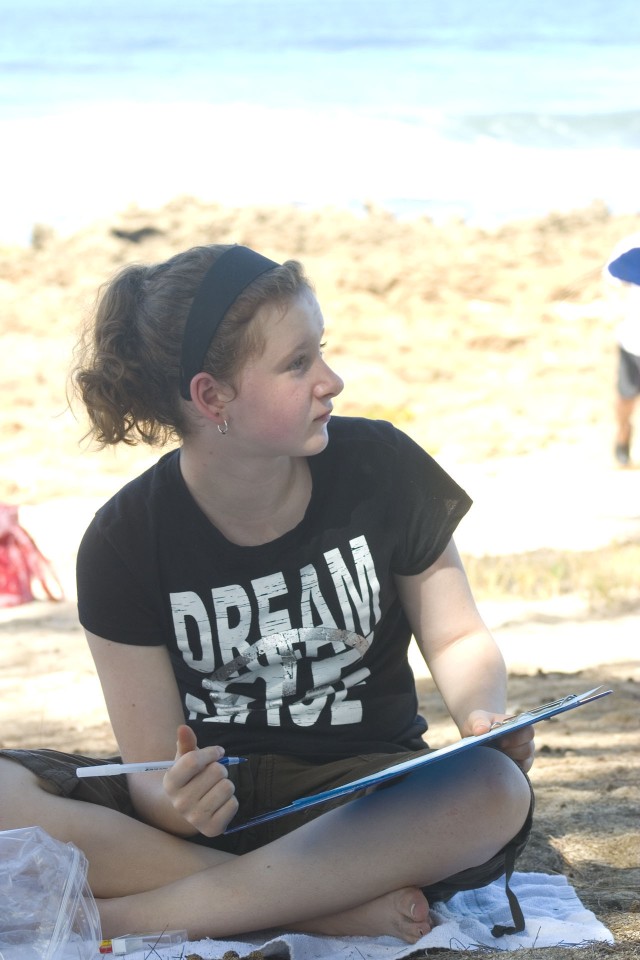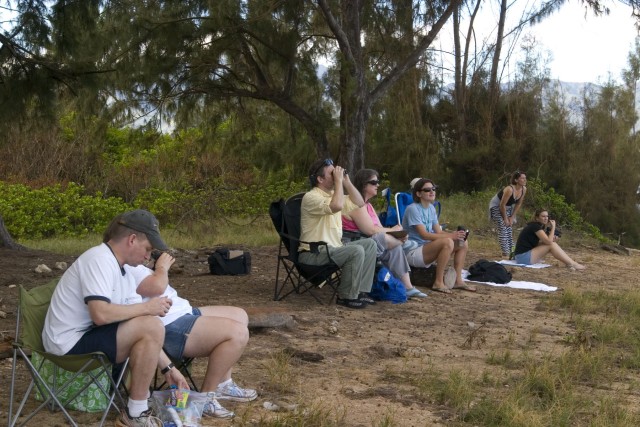SCHOFIELD BARRACKS, Hawaii - A small group gathered at the Outdoor Recreation Center for a whale watching adventure here, Jan. 31.
More than 20 family members piled in a van and were driven to Haleiwa where they met with site leader and volunteer Renee Bergeron, National Oceanic and Atmospheric Administration (NOAA).
A small hike led them to Puaena Point Beach were they began to tally humpback whale sightings as part of the annual Hawaiian Islands Humpback Whale National Marine Sanctuary Ocean Count.
Bergeron explained a number of whale behaviors, including breach, puduncle slap and fluke up dive, a display in which the humpback whale lunges forward with its head raised above water.
The group then sat on the beach, located whales off the shore and recorded their behaviors during the land survey.
Raimie Neibaur, 11, took notes as other volunteers called out various behaviors from behind binoculars.
Although it wasn't the first time the child had seen whales, it was a magical moment for her.
"This is fun," said Neibaur. "It's cool to see how they act in the water."
In the early morning hours, numerous whales provided a show for volunteers, emerging from the water, exhaling air through their blowholes and slapping the surface of the water with their tails.
Activity slowed down a bit as the day went on, but family members remained on the beach, dedicated to recording information and searching for more sightings.
"It seems appropriate to go whale watching while living in Hawaii," said David Zuckerman, sustainability program manager, Installation Management Command-Pacific. "This event encourages partnership between the military community and the state. We are all here to volunteer and be a part of something greater."
Humpback whales migrate each winter to the Hawaiian shores to mate, give birth and care for their young, according to Bergeron.
The whale watching season peaks in February and March, and by mid-May, almost all of the whales have departed to migrate back to their feeding grounds in the waters off Alaska.
The NOAA manages the sanctuary and protects humpback whales and their
habitat.
Humpback whales are an endangered species, according to the sanctuary. In the past, the global humpback whale population size was about 750,000 to 2 million animals. The current global population is approximately 30 to 40 thousand. On average, 10,000 humpback whales could come to Hawaii each winter.
The Hawaiian Islands Humpback Whale National Marine Sanctuary Ocean Count takes place the last Saturday in January, February and March, bringing hundreds of volunteers to 56 sites statewide.










Social Sharing